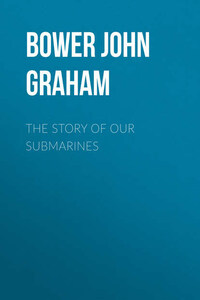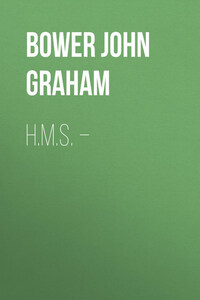There has naturally been a great deal of ink spilled during the War on the subject of the U-boat. The British Submarines have worked unseen and unheard of. Occasionally a few official lines have appeared in the newspapers about them, but the very nature of the work they have been doing has precluded any divulging of their activity. With the permission of the Admiralty I am about to speak now of some of the work they have done, and to give their own reports describing some of the many occasions on which they have been in contact with the enemy.
On August 4, 1914, we had in our Submarine Service the following boats: 9 E class, 8 D class, 37 C class, 10 B class.
Of these, the B and C classes were 320 tons submerged displacement, and were not suitable for the patrol round the mouth of the Bight. The D and E boats were designed for that purpose, being of 600 and 800 tons submerged displacement respectively. The B and C classes were used in the War for local patrols, defence of the coasts and ports, and (as the War progressed and they became obsolete), for instruction of new entries of personnel.
Before I get on to the War itself I want to give a short description of the entry and training of our personnel both before and after the War began.
In peace time an officer who wished to join the Submarine Service had first to receive a recommendation from his own Captain. He then had to produce either a first-class certificate for his Torpedo examination for Lieutenant, or, if he had not that qualification, a certificate from the Torpedo-Lieutenant of his ship to the effect that he showed special zeal in that branch of his duties. If his name was accepted it was placed at the bottom of the candidates' list, and in due time, after an interval which varied from year to year, he was appointed to Fort Blockhouse, the Submarine Depot at Gosport. There the batch of new officers were medically examined, and (the standard being high) the unfit were weeded out and returned to their ships.
For the next three months he went through a course of practical submarine instruction, his training period terminating in examinations which provided another obstacle, the meshes of which prevented certain candidates from proceeding further.
The officers of the class were then sent as "third hands" to different boats to await vacancies as First Lieutenants. After two to four years as First Lieutenant (the time varied with the number of new boats built), an officer obtained command of an A boat (of 204 tons), from which he rose by seniority to larger and more powerful commands.
The men entered in much the same way, being recommended, of first-class character and of excellent physical standard. They went through a less comprehensive training course, but had the same weeding-out to undergo, so that as far as possible the "duds" were got rid of before they had cost the country much in useless teaching.
In war-time it has not been possible to spare the time for the full instructional courses, but the courses continued, although much shortened. The shortage of personnel in the Navy generally cut down the field from which volunteers were drawn, but in spite of this the Submarine Service was able to keep up its voluntary entry, and to continue to retain its standard by drafting back those who were by nature or capabilities unfit for such work. The submarine sailor is a picked man, and is the admiration of his officers. There is a Democracy of Things Real in the boats which is a very fine kind of Democracy. Both men and officers in a submarine know that each man's life is held in the hand of any one of them, who by carelessness or ignorance may make their ship into a common coffin; all ranks live close together, and when the occasion arises go to their deaths in the same way. The Fear of Death is a great leveller, and in submarines an officer or a man's competency for his job is the only real standard by which he is judged.
In the German Navy, before the War, the Submarine Service had not received the attention it might have done. There, the submarine officer did not hold the status in the eyes of his Navy that was held by his destroyer or battleship brother. Since the accident to U-3 at exercise practice, also, certain rules for exercise had been introduced, which precluded practice attacks on target-ships going at high speed, and had circumscribed the areas (by defining "safe" depths of water) in which exercises might be carried out. In our Navy it had always been recognised that risks must be incurred in peace, so as to ensure greater safety in war. As far back as 1912 our submarines were practising attacks on destroyers zigzagging at high speed, and were diving in any waters, and generally reproducing war conditions as far as possible. While even in 1904 the early boats on manœuvres were allowed to dive under surface ships, and destroyers were allowed to use wire-sweeps against them.
For years before the War a Submarine Defence Committee of officers was working to find the best antidote to the submarine menace, and experiments were carried out by the Committee with our own boats. The result of this was that, on the War coming, both the submarine officers and those of our Navy whose task it was to deal with the U-boat had considerable experience to begin on.









